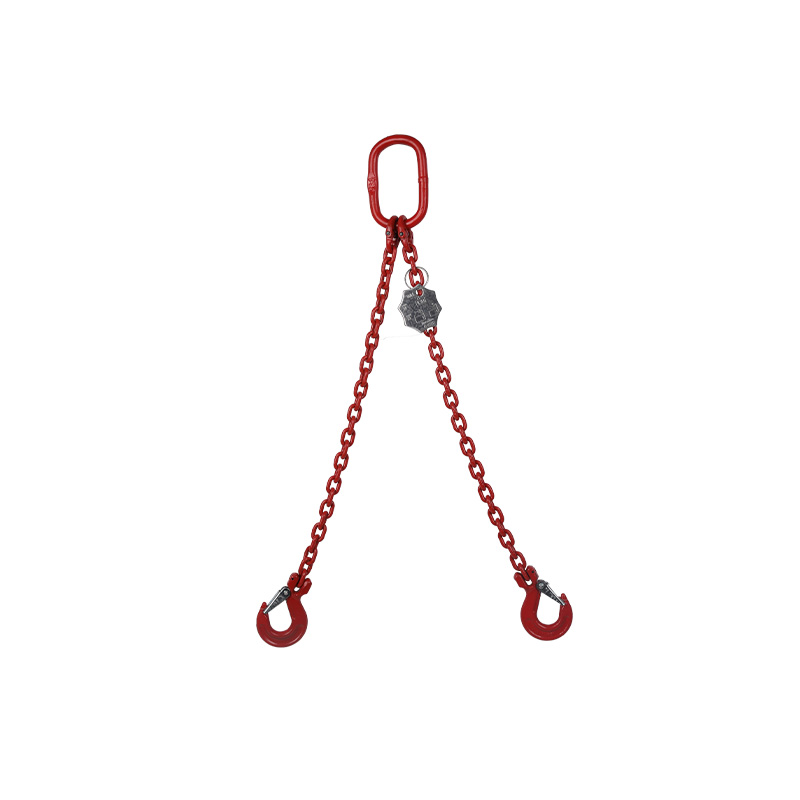Home / News / Industry News / Identification of G80 chain slings is a critical aspect of their safe and proper use in lifting and rigging applications
Identification of G80 chain slings is a critical aspect of their safe and proper use in lifting and rigging applications
Oct 12,2023
Identification of G80 chain slings is a critical aspect of their safe and proper use in lifting and rigging applications. Proper identification ensures that users can determine the sling's specifications, capabilities, and history, which is essential for maintaining safety. Here are the key characteristics related to the identification of G80 chain slings:
Working Load Limit (WLL): The most critical piece of information on a G80 chain sling is its Working Load Limit, often expressed in tons or kilograms. The WLL specifies the maximum load that the sling is rated to safely lift. It is essential to never exceed this limit to prevent accidents and equipment damage.
Grade: G80 refers to the grade of the alloy steel used in the chain sling. This grade signifies the material's strength and durability. G80 chains are considered high-strength and are suitable for lifting heavy loads.
Chain Size: The size of the chain links in the sling is typically indicated. Chain size is a crucial factor in determining the sling's strength and capacity.
Manufacturer's Markings: The manufacturer's markings provide information about the manufacturer or brand of the chain sling. This helps users identify the source of the sling and can be useful for warranty or quality control purposes.
Traceability Marks: Some chain slings have traceability marks or codes that allow for tracking their history, including manufacturing date, inspection records, and any repairs or alterations. This traceability can be vital for safety and maintenance purposes.
Length: The length of the chain sling may be marked or indicated on the sling itself. Knowing the length is essential for proper rigging and load calculations.
Attachments: If the chain sling comes with attachments such as hooks or fittings, these attachments may have their own identification markings, including their WLL, size, and manufacturer.
Serial Number: Some chain slings have a unique serial number for further tracking and identification. This can be especially useful when dealing with large inventories of slings.
Material Specifications: The material specifications of the chain links may be marked, providing details about the type of alloy steel used, heat treatment, and other relevant material properties.
Safety Information: Some chain slings may include safety information or warnings on the sling itself. This information can include guidelines for proper use, inspection procedures, and precautions to take when using the sling.
Regulatory Compliance Marks: Depending on the region and applicable regulations, chain slings may bear specific marks or certifications indicating that they meet industry and safety standards.
Inspection Date: For slings that require periodic inspections, the inspection date may be marked or tagged on the sling. This date indicates when the sling was last inspected and should be checked before each use.
Proper identification and regular inspection are crucial for ensuring the safety and reliability of G80 chain slings. Users should follow the manufacturer's guidelines and industry standards when it comes to inspection intervals, maintenance, and retirement criteria. Additionally, training and education for personnel involved in lifting operations are essential to ensure safe and efficient use of chain slings.

G-80 Double Leg Chain Sling Hooks

G-80 Double Leg Chain Sling Hooks


 English
English Español
Español









-1.jpg?imageView2/2/w/426/h/347/format/webp/q/75)

 Hangzhou Lijia Chain Co., Ltd.
Hangzhou Lijia Chain Co., Ltd. Tel: +86-0571-82711102
Tel: +86-0571-82711102 Fax: +86-0571-82326368
Fax: +86-0571-82326368 Mail: info@ljchain.com
Mail: info@ljchain.com Add: Lianfa village, Heshang town Xiaoshan District, Hangzhou City, Zhejiang Province, China
Add: Lianfa village, Heshang town Xiaoshan District, Hangzhou City, Zhejiang Province, China